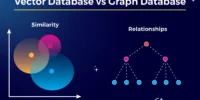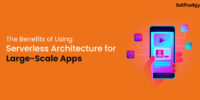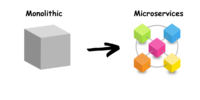Enter the world of graph databases, where relationships take center stage, and data connectivity is king. Graph databases are not just a buzzword; they’re a powerful tool for organizing and retrieving interconnected data efficiently. Ready to unlock the goodness of graph databases? Here are some quick tips to make the most of this dynamic technology!
The Essence of Graph Databases
Before we dive into the tips, let’s grasp the essence of graph databases. Unlike traditional relational databases, graph databases focus on relationships. They excel at representing and navigating complex relationships, making them ideal for scenarios where connections matter just as much as the data itself.
Quick Tips for Effective Graph Database Use
- Model Relationships Thoughtfully: When designing your graph database, carefully model relationships. Understand the connections between entities and leverage the graph structure to represent these relationships accurately. This thoughtful modeling lays the foundation for efficient data traversal.
- Utilize Indexing for Performance: Implement indexing strategically to enhance query performance. Indexing allows the graph database to locate and retrieve data more quickly, especially when dealing with large datasets. Choose the right indexing strategy based on your specific use case.
- Optimize Query Patterns: Analyze your query patterns and optimize them for efficient traversal. Graph databases shine when it comes to traversing relationships, so structure your queries to leverage this strength. Understand the nuances of the graph query language supported by your chosen database.
- Scale Horizontally: Plan for scalability by adopting a horizontal scaling approach. Distribute your graph database across multiple servers to handle growing datasets and increasing query loads. This ensures that your graph database can evolve with the demands of your application.
- Security Considerations: Prioritize security by defining access controls and authentication mechanisms. Ensure that sensitive relationships and nodes are appropriately protected. Implement encryption where necessary to safeguard your graph database from unauthorized access.
Challenges in Graph Database Implementation
While graph databases offer tremendous advantages, challenges exist in their implementation. Managing the complexity of relationships, addressing performance bottlenecks in certain query patterns, and ensuring consistency in distributed environments are among the challenges that developers may encounter.
The Future of Graph Databases
The future of graph databases is promising, with ongoing advancements in technology. Trends include improved graph query languages, enhanced support for distributed transactions, and the integration of graph databases with machine learning for more intelligent data analysis. Keeping an eye on these trends can guide your long-term graph database strategy.
Conclusion
Graph databases bring a unique flavor to the world of data management, offering a refreshing approach to handling interconnected information. By modeling relationships thoughtfully, optimizing queries, scaling horizontally, and addressing security considerations, you can harness the goodness of graph databases for your applications. Embrace the interconnected world of data with graph databases, and watch your data relationships thrive! ✨








